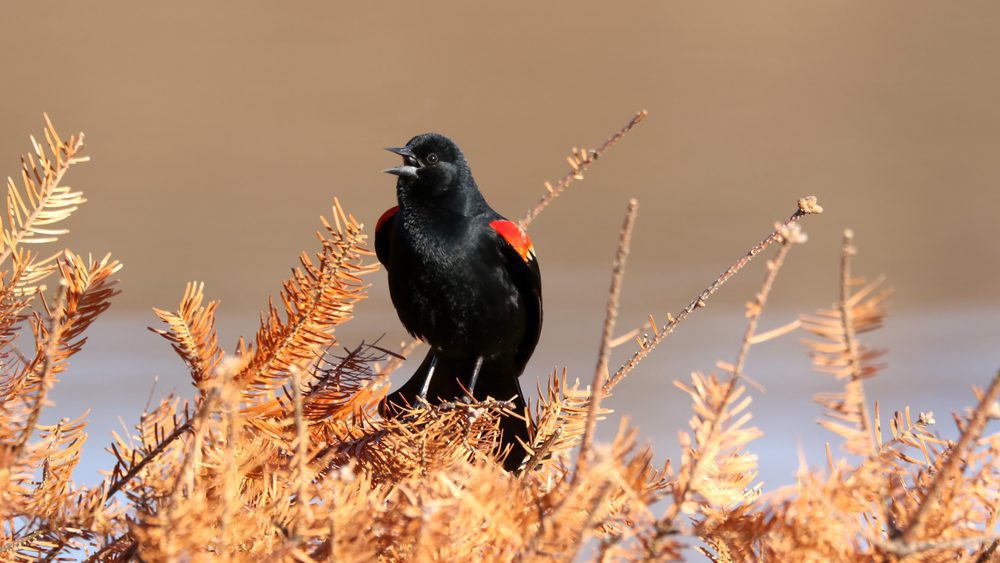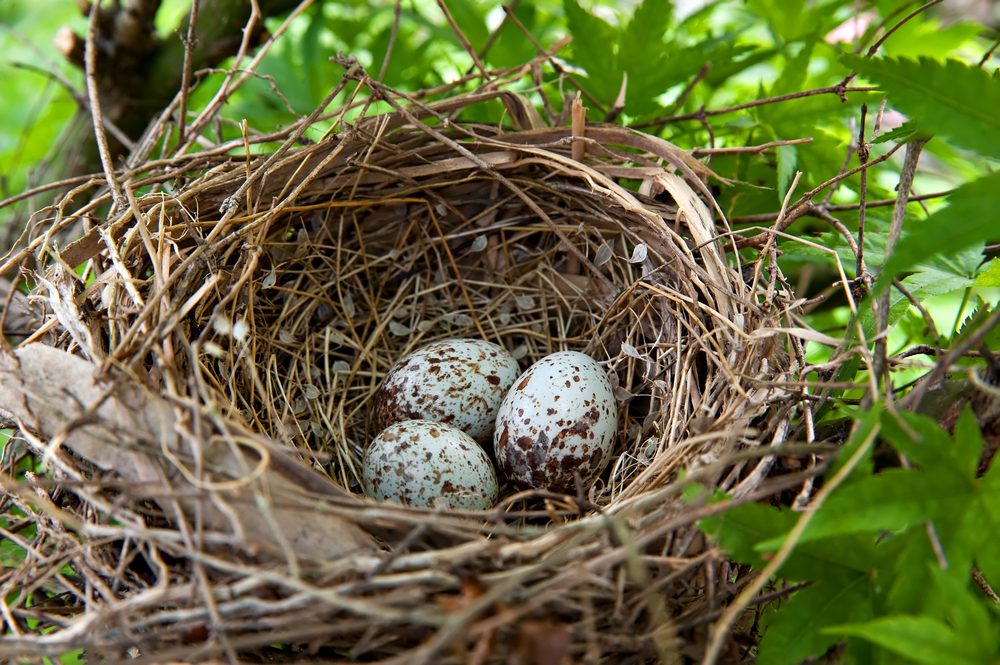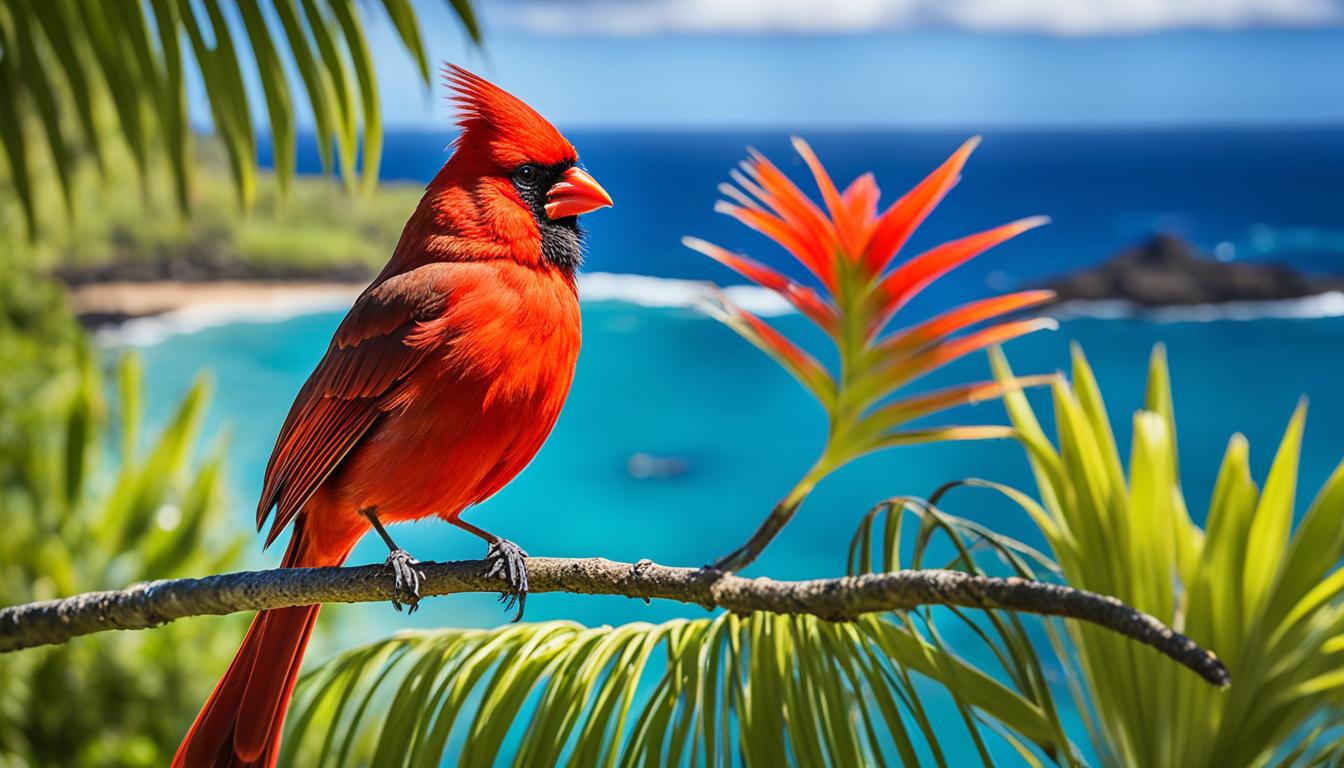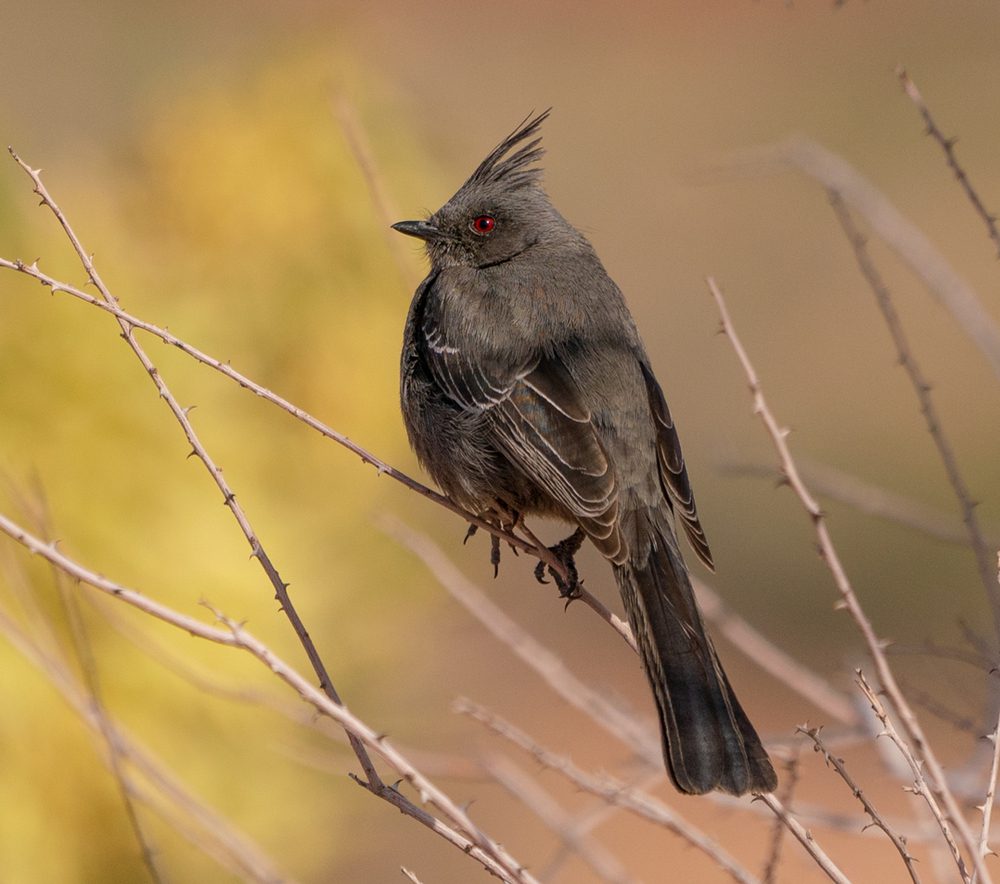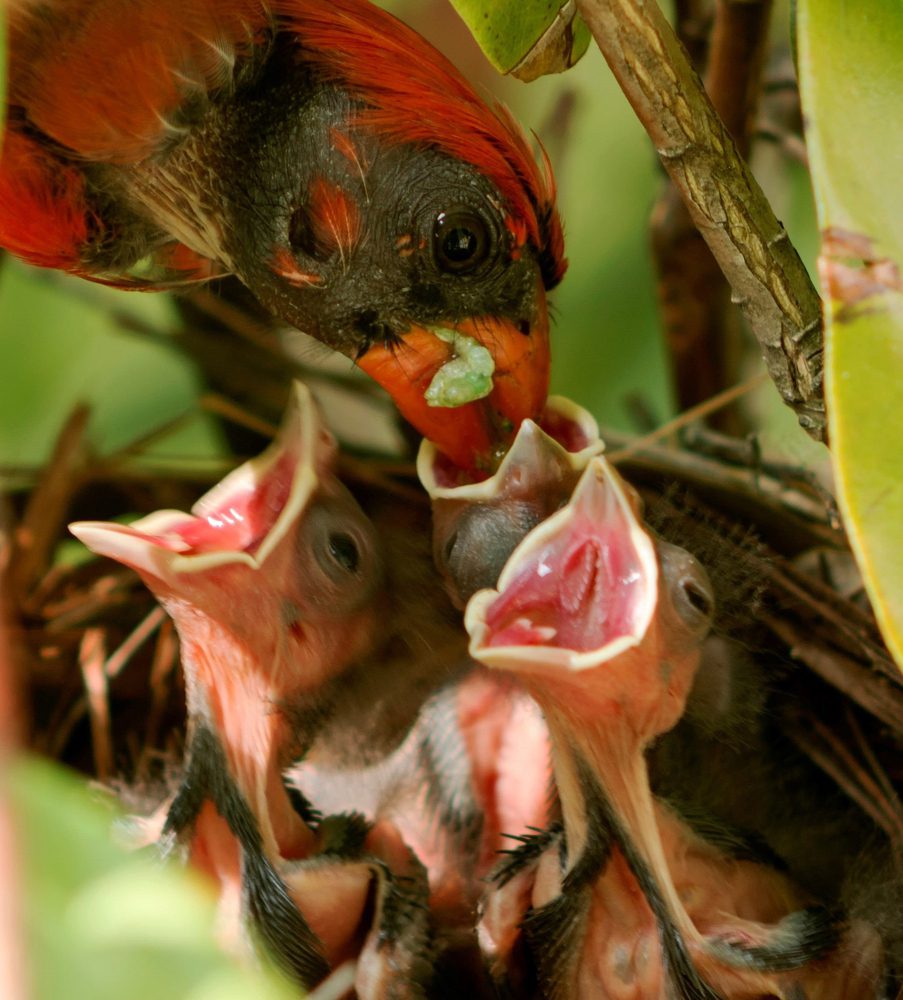Dive into the Dazzling World of Red-winged Blackbird Fun Facts You Never Knew!
But beyond their eye-catching displays, red-winged blackbirds hold a treasure trove of hidden quirks and secrets. Want to impress your friends with unexpected bird knowledge? Stump the next birder you meet? Or simply unlock a deeper appreciation for these common (yet extraordinary) creatures?
Then buckle up, bird enthusiasts! This post dives into the captivating world of red-winged blackbirds, revealing unexpected facts and behaviors that will leave you chirping with delight. Prepare to be amazed by their aerial acrobatics, surprised by their surprising polygamy, and charmed by their unique way of communicating. So, grab your binoculars (or just your curiosity), and let’s explore the fascinating world of the red-winged blackbird!
Key Content
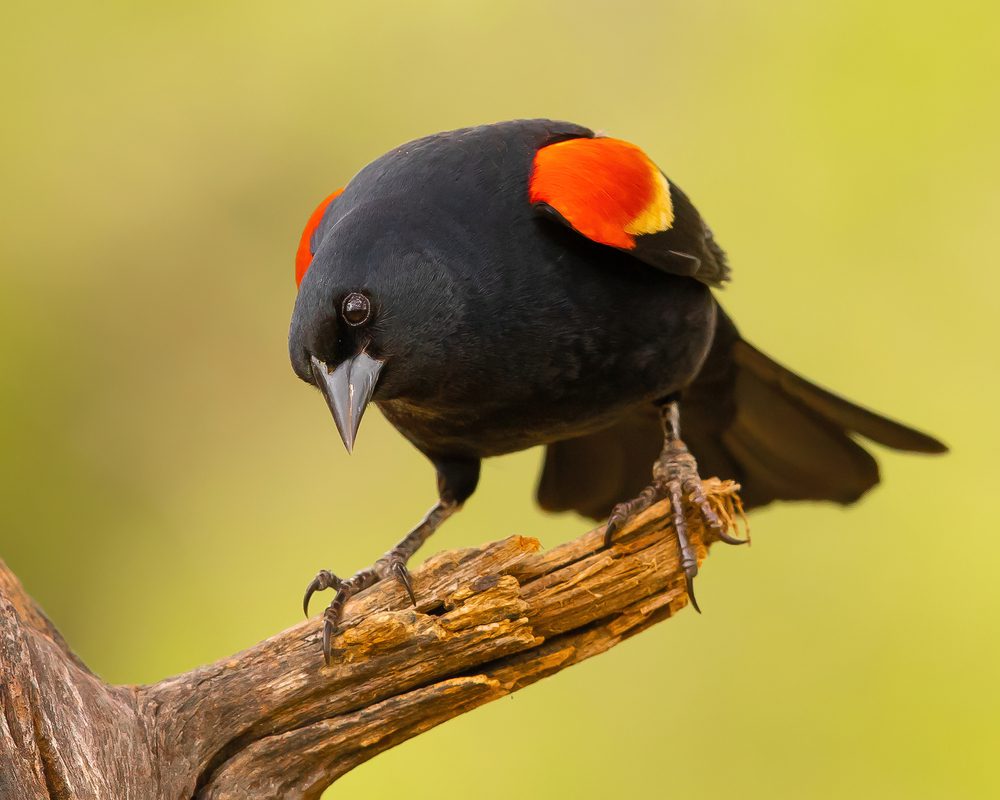
When spring is coming, Red-winged blackbirds are back, singing their loud, clear songs across North America. These aren’t just any blackbirds, though. They’re like the rockstars of the bird world, with bright red and yellow patches on their wings. What’s the deal with all that color? For male blackbirds, it’s all about showing off and attracting mates.
Think of it like wearing the coolest outfit to a party! Female blackbirds, on the other hand, are more undercover with their brown streaks. They’re busy building hidden nests and raising chicks, so blending in with the reeds keeps them safe. So next time you hear that “conk-a-ree” call, remember: it’s not just a sound, it’s a whole spring drama playing out right before your eyes! [1]
Red-Winged Blackbird Fun Facts For Everyone!
Red-Winged Blackbirds are real-life rockstars in the bird world, with unique moves and cool tricks that scientists and birdwatchers love to see. Let’s dive into these black beauties fun facts :
Food Fanatics: These birds aren’t picky eaters! They gobble up seeds, grains, and even bugs like grasshoppers – whatever they can find depending on the season. Think of them as nature’s little superheroes, adapting to their surroundings to survive.
Social Butterflies (and Fighters): Male Red-Wings are super protective of their “homes,” puffing out their chests and flashing their red wings to scare off any intruders. It’s like a bird version of a superhero pose! Meanwhile, female Red-Wings are like awesome roommates, building nests together in big groups called colonies. Imagine a giant apartment building for birds!
Travel Bugs: When the seasons change, these birds don’t stick around – they pack their bags (well, not literally) and fly in giant groups to find new places with plenty of food. Scientists track where they go to learn more about their amazing journeys.
Nest Builders Extraordinaire: Red-Wings love building their homes in marshes, wetlands, and grassy fields. These spots are like their perfect vacation destinations, with lots of space and resources for raising their chicks. Plus, having lots of Red-Wings around helps keep these ecosystems healthy and thriving
| Behavior | Insight |
|---|---|
| Territory Defense | Males display unique territorial calls and confrontations to repel intruders, vital for successful mating. |
| Nesting Material Collection | Females meticulously gather plant material, mud, and other substances, exemplifying their resourcefulness. |
| Group Roosting | Communal roosting in large flocks offers protection and warmth, a behavior especially observed outside of breeding season. |
| Adaptation to Human-altered Landscapes | Their ability to adapt to agricultural areas underscores the importance of understanding red-winged blackbird habitat details. |
Red-winged Blackbirds: Making it Home in Different Places
These Red-Winged Blackbird Behavior Insights not only enhance our appreciation for these avian wonders but also underline the importance of preserving the diverse landscapes that support their existence.
Imagine North America without the bold splash of red and black that is the red-winged blackbird! These cool birds can actually live in many different spots, making them pretty adaptable. But their favorites are like giant buffets – wetlands and marshes. Think lots of water plants, cattails, and insects to munch on, plus perfect places to build hidden nests.
Wetlands rock for red-winged blackbirds because:
- Food galore: Insects, seeds, and grains – yum! This buffet keeps them fueled up for flying and singing.
- Cozy homes: They weave nests in tall plants, safe from hungry predators.
- Shelter: The plants hide them from bad weather and keep them cool in the summer sun.
But these birds aren’t picky! You might also find them in farms, fields, and even city parks. They’re happy to help out by eating insects that might harm crops and gardens, and they even help plants grow by spreading pollen as they fly around.
Red-winged blackbirds are pretty amazing, right? They show us that even when things change around them, they can find ways to adapt and thrive. Now that’s cool!
Red-Winged Blackbird Diet Specifics
The red-winged blackbird is known for its astounding adaptability not just in habitat, but also in its feeding habits. The bird’s diet includes a variety of nutrition sources, which range from insects to grains, depending on the season and the bird’s current needs, especially during the crucial breeding season. This varied diet plays a pivotal role in the health, behavior, and reproductive success of the species.
Seasonal Variations in Diet
- In spring and summer, their diet primarily consists of protein-rich insects, which provide the necessary energy for breeding.
- During fall, red-winged blackbirds shift to feeding on grains and seeds as they prepare for migration or to endure the winter.
- Winter diets are supplemented with plant matter, suet, and other available food sources that can sustain them through colder temperatures.
Insights into Red-Winged Blackbird Behavior
Delving into the social dynamics of the Red-Winged Blackbird, we find a tapestry woven with complex patterns of hierarchy and territory. These intriguing aspects of red-winged blackbird social behavior are not mere eccentricities but are key to their survival and proliferation, particularly during the Red-Winged Blackbird Breeding Habits season. Understanding this behavior provides insight into not just the species itself, but the ecosystems they inhabit and influence.
Social Structures and Territoriality
Male red-winged blackbirds are known for their fierce territoriality, a trait that’s intimately connected with their breeding success. Each spring, males stake out territories in marshy areas, often returning to the same location year after year. They defend their space with an array of displays and confrontations, ensuring they attract females for mating. The social hierarchy among these birds is most evident during this period, as dominant males secure prime nesting grounds, while subordinates are left with less desirable areas.
The Meaning Behind Vocalizations and Calls
Vocalizations play a critical role in the red-winged blackbird’s life, functioning as a means of communication that maintains social order and facilitates mating. The male’s distinctive call, a rich concoction of trills and whistles, serves dual purposes: it’s both an advertisement to prospective mates and a warning to rival males. Females, with their subtler chirps, signal readiness for mating and communicate with their offspring. The intricate nature of these calls underscores the complexity of the red-winged blackbird’s social interactions, influencing everything from mating to the defense of their young.
Red-Winged Blackbird Breeding Habits
Spring ushers in a pivotal season for red-winged blackbirds, signaling the start of an elaborate sequence of mating and nesting activities. Intricate behaviors, crafted by evolution, emerge as these birds engage in rituals that ensure the propagation of their species. This is a time when the vibrant marshlands they call home become stages for their intricate mating dances and architectural feats of nest construction.
Nesting Practices and Mating Rituals
Red-winged blackbird nesting is a process steeped in ritual and precision. Female blackbirds are the primary architects, selecting materials and locations that provide the best chances of survival for their offspring. Males, with their distinctive red and yellow shoulder patches, compete for the attention of females through a series of mating behaviors and calls that are as much about attraction as they are about establishing dominance.
| Nesting Material | Location | Function |
|---|---|---|
| Cattails and sedges | Lower vegetation near water | Provides cover and moisture for eggs |
| Mud and grass | Elevated locations in reeds | Creates a sturdy foundation |
| Fine grasses | Concealed in dense shrubbery | Ensures soft lining for chicks |
Parental Roles and Chick Rearing
Once nesting is secure and eggs laid, the roles of red-winged blackbird parents become sharply defined. Females take on the intensive task of incubation, tirelessly keeping the eggs at the optimal temperature. Males, noteworthy for their vigilant territorial defense, serve as protectors, warding off threats with unmatched fervor. Together, they navigate the challenges of chick rearing, from provisioning to defending against predators.
- Incubation period of approximately 11–13 days
- Female forages for food and closely monitors nest temperature
- Males exhibit distinctive red-winged blackbird mating behaviors to deter intruders
- Both parents participate in feeding the hungry brood post-hatching
Conclusion
We’re wrapping up our journey with the Red-Winged Blackbird, a cool bird that lots of people love. But there’s a sad truth: these amazing creatures are in danger! Humans and stuff happening to the environment are making things tough for them. That’s why people who care about birds, like scientists and nature lovers, are working hard to protect them. We all need to stay alert and help out to make sure they don’t disappear and keep enjoying a healthy home.

